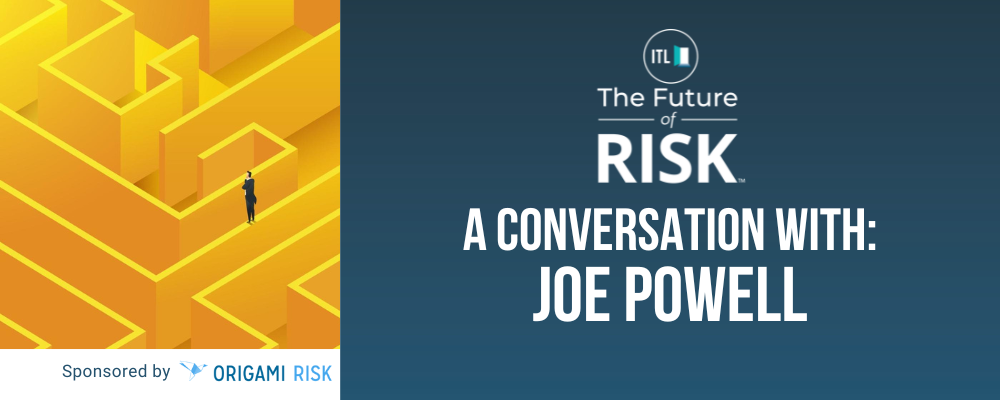 |
Matthew Grant has been building and advising companies on the innovative use of technology, data and analytics for over 30 years. With a degree in mechanical engineering, Matthew has been involved in the entire cycle of risk management, insurance and capital management. He was responsible for launching catastrophe modeling into Europe in 1992 and was on the executive team of Risk Management Solutions (RMS) for eight years. Over his career at RMS from 1996 to 2016, his roles included running global sales and marketing, leading the product team and developing emerging market solutions, including catastrophe bonds and parametric products. Matthew joined InsTech in 2016 and is the CEO and co-owner. InsTech currently works with over 170 companies in insurance and technology that are supporting innovation, and the InsTech team provides advice, events, content and introductions. InsTech engaged with over 100,000 people around the world in 2023. Matthew hosts the weekly InsTech podcasts, writes regularly on the topics and themes of relevance to insurance and risk management, and parametric insurance is a major theme at this time. Matthew speaks frequently at InsTech events and other industry conferences. Matthew is an angel investor in U.K.-based technology companies supporting insurance and financial services. |
Paul Carroll
When insurtech became a trend, people initially talked widespread disruption. “Amazon is going to come in and kill all the insurers”—that sort of thing. People seem to have moved past that, and we’re now in Insurtech 2.0 or even 3.0. To start us off, how would you broadly characterize the sweep of insurtech over the last 10 years or so?
Matthew Grant
It has occurred to me that innovation is what you do when nothing else works.
People can't do thinking incrementally. And unless you've got some big external force driving change, it's almost impossible to come along and say, Here's a new idea.
We're not going to change the world if people don't have a compelling need to change.
I am careful about using the term “insurtech” because it’s imprecise, and it can exclude companies that have been around for more than a decade. Many well-established technology companies are still innovating and successfully releasing new products.
Paul Carroll
Where do we go with funding from here? Everything was up, up, up. And then for the last year and a half or more, funding has trailed off. Do you see the big funding days ever coming back? Or do you see us moving into a new phase in terms of how people fund innovation?
Matthew Grant
If you look at the unicorns, what drove the crazy valuations was this rush to IPOs [initial public offerings], a long way from any conventional earnings multiples. What we’re seeing now is much more of a return to a traditional EBITDA model. We are also seeing more backing by private equity that needs to make short-term returns to fund its acquisition debt.
Things are slightly different in the U.S. and Europe, because Europe is always a little bit more traditional. The survivors among the start-ups are the companies that typically were started by people in the industry, which are taking a more old-fashioned approach. They get customers, generate revenue, start to make a profit and THEN go out and look for investment. At this later stage, they can bring a decent investment, and they use that to grow the business.
But it’s very difficult now to get investment based on a valuation of the multiples of earnings, or even revenue, that were common a couple of years ago. VCs [venture capitalists] and PE [private equity] still have to deploy their funds somewhere, so it’s not drying up totally. But high interest rates complicate things, and we’re coming back to a greater level of scrutiny.
Paul Carroll
Yeah, I've seen this before, in particular in the internet days. People get excited by the possibilities of growth and convince themselves that trees can grow to the sky. Then reality sets in, and investors start to demand profits and cash flow.
Matthew Grant
I also think there’s a key difference between insurtech and the rest of fintech. In the banking world, we make decisions much more frequently than we do in insurance. In banking, someone might make a decision a few times a day. If you’re a trader, actions happen in milliseconds. But insurance contracts come once a year. So you can live with a lot more of a clunky process.
When you look at the thousands of insurtech companies that we’ve started up, most of them address problems that are No. 11 on a board’s list of top 10 priorities. The insurtechs have nice ideas, and you can see how they’d make some money, but is a company really going to make the effort to bring in the insurtech’s product or service if there isn’t a burning problem for them that demands change now?
Paul Carroll
Back in the early internet days, I, and others, wrote favorably about what we called the arms suppliers. Lots of companies tried to rewrite the rules of commerce, and they generally failed. But a company like Sun, which sold lots and lots of servers to the companies trying to rewrite the rules of commerce, thrived. Do you see that sort of trend with insurtechs?
Matthew Grant
If you look at the technology adoption curve, there's only ever going to be a small number of insurance companies that are willing to work with new technology and new companies and be comfortable with the pain of onboarding. The industry is still working through that stage of “early adopters” before we move to the “early majority.”
What is really interesting that’s happening here in the U.K.—I think more than in the U.S.—is that companies that started up eight to 10 years ago have proved themselves to some insurance companies and are being trusted to do more across their client company to make other processes smoother. And start-ups now don’t just collaborate with the insurer, they collaborate with each other, too. You get this collaboration of the willing, where they cross-fertilize each other, and you then get a multiplier effect of benefit to all
Some established companies like Guidewire and RMS are starting to open up their environments to anyone they think is strong enough technically to connect in.
Paul Carroll
This has been great. Any final thoughts?
Matthew Grant
If you look at Lloyd’s, which is intended to be the insurer of last resort, there are a few isolated cases of people doing interesting things with unusual risks, but there’s not this wholesale adoption of new ideas. It's more about following the business where rates have gone up. If rates are up 10% for reinsurance, they will want to go and write more reinsurance. Rates are going up for cyber, so write more cyber.
I think the insurtech vision dried out because there wasn't a big enough appetite on the receiving end, and change is hard.. Parametric is an example of a good idea of changing how insurance is offered, and of a solution where traditional insurance isn’t available. There are an increasing number of companies in this space, but only a few have been very successful.
Whether that’s a warning or not, we can't just blame the disruptors for being overly enthusiastic. From a commercial point of view, the insurance market has to overcome a lot of friction to do things differently.
Paul Carroll
Thanks, Matthew. I always feel smarter after we talk.








